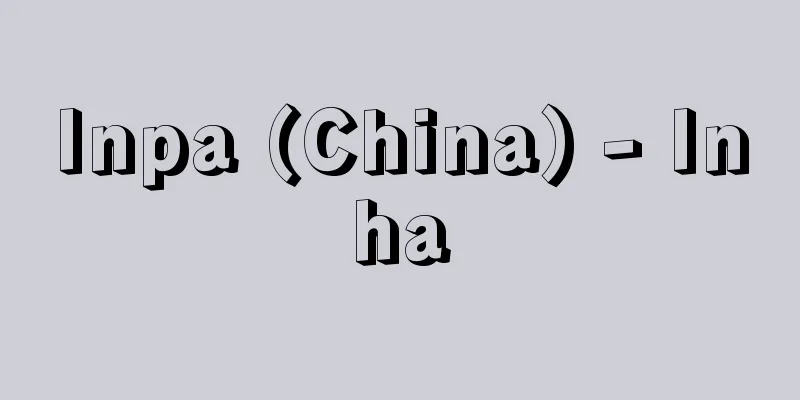Kazumasa Ishikawa

|
Year of death: Bunroku 1 (1592) Year of birth: Year of birth unknown. Military commander during the Sengoku and Azuchi-Momoyama periods. Commonly known as Yoshiro, Hoki no Kami, and Izumo no Kami. Later he was known as Yasumasa and Yoshiteru. Son of Ishikawa Yasumasa. In 1549, he accompanied Matsudaira Takechiyo (Tokugawa Ieyasu), who was held hostage by the Suruga Imagawa clan. After the Battle of Okehazama, when Ieyasu gained independence from the Imagawa clan, he played an active role in domestic and foreign affairs as a senior retainer along with Sakai Tadatsugu and Ishikawa Ienari. In 1569, he replaced his uncle Ienari as the leader of Western Mikawa. However, there was a difference between him and Sakai Tadatsugu, the leader of Eastern Mikawa, in terms of territorial control. Tadatsugu exercised some of Ieyasu's authority on his behalf, whereas Ienari and Kazumasa did not. In the Battle of Komaki and Nagakute in 1584, when Ieyasu fought against Toyotomi Hideyoshi, he defended the main camp at Komakiyama. In the following year, he fled Okazaki Castle, where he was serving as the castle lord, and joined Hideyoshi's side, although the reasons for this are not clear. In the following year, Hideyoshi granted him land in Izumi Province. After the Battle of Odawara in the following year, he was transferred to Matsumoto in Shinano Province with a fief of 80,000 koku. In 1592, he marched to Nagoya in Hizen, and died the same year. The place and date of his death are unknown, but his funeral was held on December 14th at Shichijogawara in Kyoto. <References> Nakamura Takaya, "Ieyasu's Retainers: Military Commanders"; Kitajima Masamoto, "Ishikawa Kazumasa, Lord of Hoki" (Portraits of Early Modern History); Kanai En, "The Death of Ishikawa Kazumasa" (Research on the Establishment of the Feudal System); Hirano Akio, "The Tokugawa Clan's System of Control During the Unification of Mikawa: Through the Status and Authority of Sakai Tadatsugu, Ishikawa Ienari, and Kazumasa" (Sengoku History Research, No. 23) (Akio Hirano) Source: Asahi Japanese Historical Biography: Asahi Shimbun Publications Inc. About Asahi Japanese Historical Biography |
|
没年:文禄1(1592) 生年:生年不詳 戦国・安土桃山時代の武将。通称は与七郎,伯耆守,出雲守。のち康正,吉輝と名乗る。石川康正の子。天文18(1549)年駿河今川氏の人質となった松平竹千代(徳川家康)に随行する。桶狭間の戦後,家康が今川氏から独立すると,酒井忠次,石川家成と共に,老臣として,内政・外交に活躍する。永禄12(1569)年には,叔父家成に代わって西三河の旗頭となった。なお,領国支配においては,東三河の旗頭・酒井忠次との間に違いがある。忠次が家康の権限の一部を代行していたのに対し,家成・数正にはそのような権限はなかった。天正12(1584)年家康が豊臣秀吉と戦った小牧・長久手の戦では,小牧山の本陣を守る。翌13年城代を務めていた岡崎城を出奔し,秀吉方へ走る。ただし,その理由は明らかになっていない。同14年秀吉から和泉国内に所領を与えられた。同18年小田原の役後,信濃松本8万石に移封される。文禄1(1592)年肥前名護屋に出陣し,同年没した。没地・命日は不明だが,12月14日京都七条河原で葬儀が行われている。<参考文献>中村孝也『家康の臣僚 武将篇』,北島正元「石川伯耆守数正」(『近世史の群像』),金井圓「石川数正の死」(『藩制成立期の研究』),平野明夫「三河統一期における徳川氏の支配体制―酒井忠次と石川家成・同数正の地位と権限を通して―」(『戦国史研究』23号) (平野明夫) 出典 朝日日本歴史人物事典:(株)朝日新聞出版朝日日本歴史人物事典について 情報 |
Recommend
Polymnia
...The center of worship was Mount Helikon in Pie...
Endothelial cell
… [Structure of sinusoidal cells and sinusoidal w...
Winter Button - Kanbotan
...Cultivars are classified according to the numb...
Aristolochia kaempferi (English spelling) Aristolochia kaempferi
… [Mitsuru Hotta]... *Some of the terminology tha...
Strongly swamped rice field
...Rice paddies whose soil cannot dry out even du...
Wang Xianzhi
A calligrapher from the Eastern Jin Dynasty in Ch...
Emperor Shun
The last emperor of the Yuan Dynasty in China (re...
Rockfish fishing - Rockfish fishing
…It is often used as an ingredient in kamaboko (f...
House of Savoy - Savoia (English spelling)
A noble family in northern Italy. They first becam...
Mutsu (English name) Scombrops boops
A marine fish of the family Scutigera (illustratio...
Tofukumon-in
Year of death: June 15, 1678 (August 2, 1678) Year...
One character (stone embankment) - Ichimonji
...Saiki, the central settlement in a small basin...
Leather dyeing - Kawazome
...In addition, there was a method of surimon, in...
Artsenbsk, JU - Artsenbsk
… [19th century] The reaction against the formali...
Tatsuo Yamamoto
Born: March 3, 1856 (3rd year of Ansei) Bungo [Die...









